A Review • A Greater Beauty: The Drawings of Kahlil Gibran at the Drawing Center
An expansive overview of the work of the Lebanese artist that provides context for his prodigious literary and visual output.
A Greater Beauty: The Drawings of Kahlil Gibran is wonderful in all of the ways a good exhibition should be. Well curated, mounted (and lit) by The Drawing Center, with helpful accompanying wall texts that provide a historical context for the work, it is the largest exhibition I have personally seen of this artist’s work. Do try to catch it before it comes down on Sept 11.
The exhibition presents an overview of the Lebanese artist’s drawings and sketches alongside manuscript pages, notebooks, correspondence, and magazine illustrations. It also includes some of Gibran's essays and first editions. This sheds some light on the artist’s production and, all in all, the expansive treatment that the Drawing Center opted for provides context between Gibran’s literary and visual output.
This show did something rare for me personally, as it forced me to reassess my preconceptions about the artist’s work. As a young man, I did not like Gibran’s writing or art very much. The Prophet seemed, to my youthful temperament, like spiritually pretentious drivel. For aesthetic spiritual writing of that vein, I much preferred Hesse and his particular flavor of German angst. In terms of visual art, Gibran was too emotional, too sentimental for my younger tastes. In my twenties, I was drawn to the suburban psycho-sexual narratives of Eric Fischl and the cool, ironic, post-Sigmar Polke detachment of David Salle. Gibran was simply too earnest, too honest for my younger self to handle.
I am in my 50’s now and A Greater Beauty: The Drawings of Kahlil Gibran hit hard. I suppose I was ready for it, finally mature enough. It was news to me that Gibran studied at the Académie Julian in Paris, and had worked with Rodin for a time. In hindsight, this makes perfect sense. Gibran’s drawings operate from the same rhythmic undulation of line, compressed tonality and value range as Rodin. He was a product of the zeitgeist of that age, the transition to the Modern from the pre-Modern. Neither rooted in the vapid bourgeois sentimentality that besot most French academic art of that time, nor in the unnecessary denial of humanity’s need for a spiritual solution like most of the early Moderns, Gibran existed in the middle, liminal ground between the two polarities. His spirituality was not easily categorized as being rooted in any one faith because it was authentically his own.
Many of his best works are named Untitled, and were influenced by his association with the dancing pioneer Ruth St. Denis, featuring undulating, sensually interlocking figures that flow across the composition like you would expect dancers would. There is a strong sense of the collective unconscious, a universality to these drawings that make the nomenclature of “untitled” the perfect name for them. (I’ve included images below. ) Some of the ones that do include titles, like The Heavenly Mother, are evocative as evocative of Hindu art as they are of Western Medieval compositions.
All in all, a terrific exhibition and worth seeing. Also, while you are at the Drawing Center, check out the adjacent exhibition Naudline Pierre: This Is Not All There Is. A young artist with a lot to say, Pierre’s show of works on paper is definitely worth seeing as well.
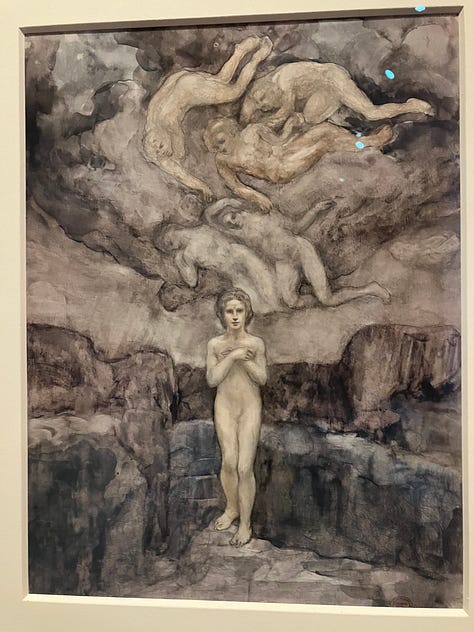
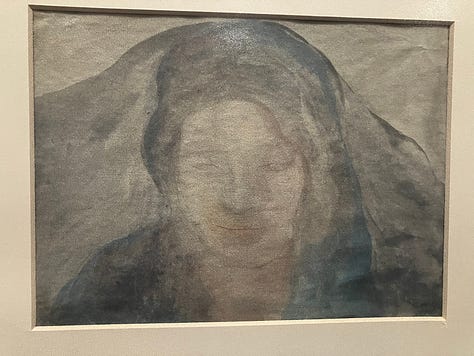
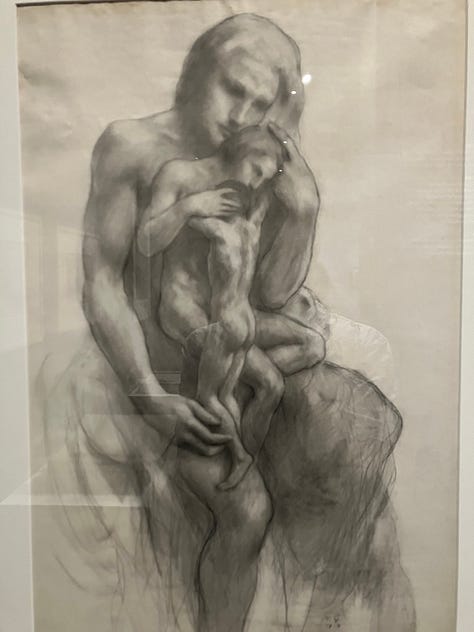
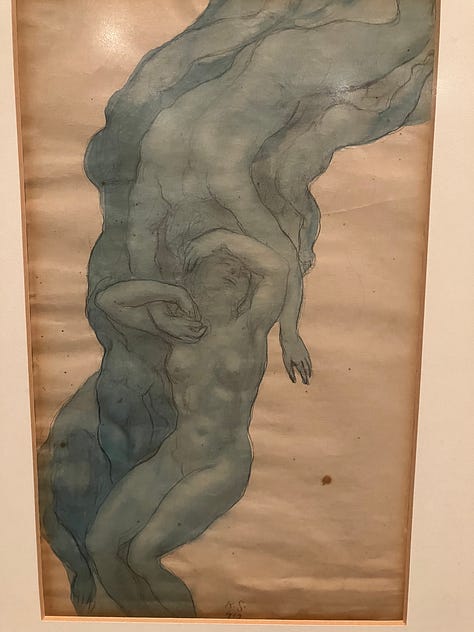
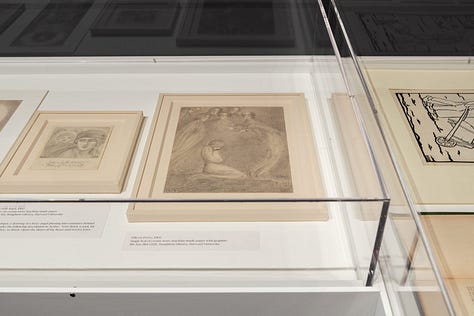
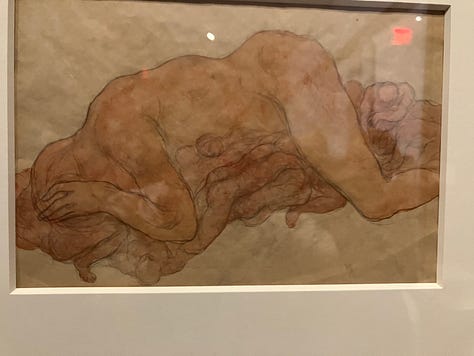
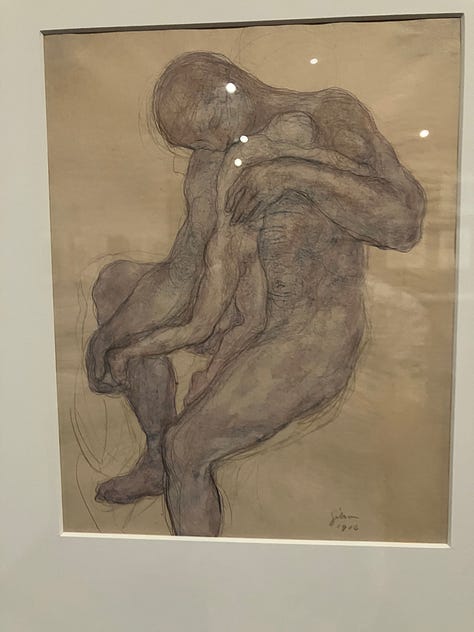
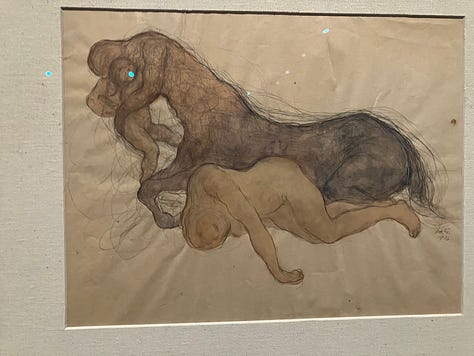
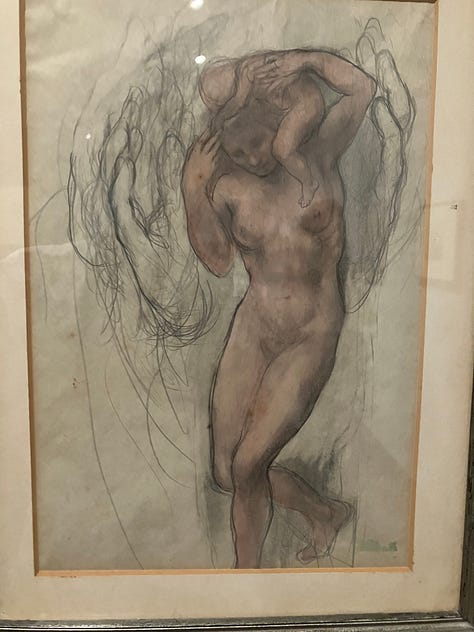




I never got behind Hesse in any strong particular way until now, Mr. Zeller.
Come to think of it I remember Steppenwolf was a healer. He was the deep and sympathetic one. Spiritual.
Thank you for that.
Neva Yardum